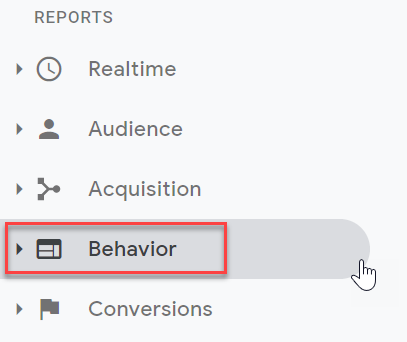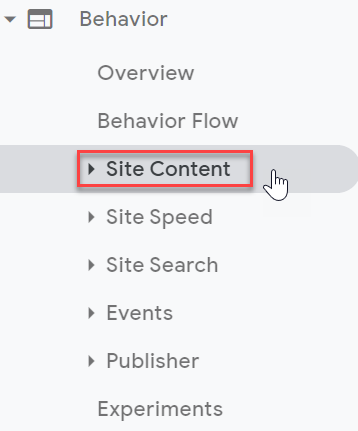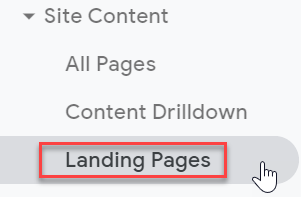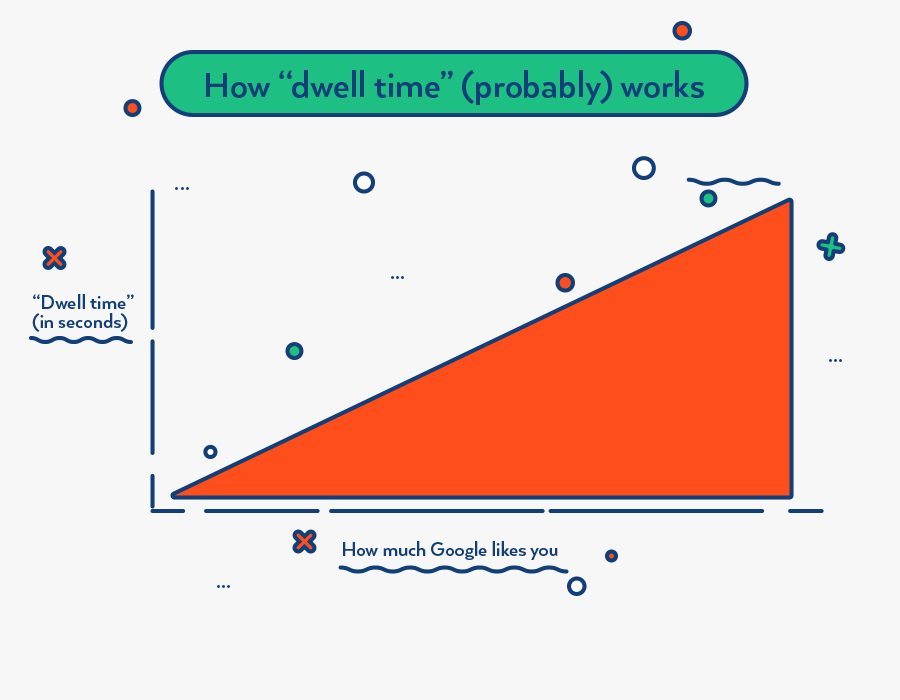| ? What’s the goal? Check Dwell Time and find a solution to optimize it. | ⚠️ Why does it matter? Higher dwell time has a positive impact on Google Ranking. |
| ? What’s the result? Your dwell time is optimized within your pages. | ⌚ When do you do this? On a regular basis and after you add some content to your site. |
| ✅ Any special requirements? N/A | ?♂️Who should do it? The person responsible for managing your website. |
Environment setup:
- We recommend that you use Google Chrome browser to navigate the web,
- Google Analytics enabled for your website.
Checking dwell time using Google Analytics
Dwell Time is the amount of time that a Google searcher spends on a page from the search results before returning back to the SERPs (Search Engine Results Pages). There is no report named “Dwell time” in Google Analytics but you can easily check it by following this method.
- First, go to the Google Analytics website.
- Sign in with your Google Account.
- Once you are in your Google Analytics account, choose “Behavior” from the left menu.

- Next, click on “Site Content”.

- Then choose “Landing Pages”.

- Choose the “Motion Chart” display.

- There you will be able to check your “Bounce Rate”(2) and “Avg. Session Duration”(1).

- You will be able to check those stats for individual pages on your website.

Avg. Session Duration (1) is your dwell time, and Bounce Rate (2) shows how often someone visits a page and hits their back button without clicking anything on the page.
Optimizing Dwell Time
In simple words, to optimize dwell time you should keep audiences attracted by your page’s content. There are many ways to do it. In this article we will show you some easy techniques on how to do it.
Use the PPT Formula
PPT Formula is a proven content introduction formula designed specifically to increase Dwell Time. Here is how this should look:
The first line of your content should be a Preview (P) of your content. This Preview lets potential audiences know that your content is exactly what they’re looking for. For example, for this article a Preview will look like this: “Today you will learn how to check and optimize dwell time”.
Your next lines are Proof (P) that your content can help them. Simply show that this is the right place to stay. You can easily refer to your personal experience, for example: “This method helped me reach the 1st page of Google Search”.
Finish with Transition (T). The transition should move your audience from your intro to the next part of your content. For example: “Let’s get started”, “Let’s start off with…”.
Also Read: Set Up Google Analytics on your Website using WordPress Plug-In
Embed a Video
Placing videos in your content can significantly boost your page’s Dwell Time. It is convenient for audiences to check short video introductions or presentations on the matter. Simple 1,5 min video will increase dwell time by its length.
You can simply replace a portion of your text with a related video or embed a video which explains more of the topic.
Remember that instead of placing a link to the video you can place video directly in your post.
Write longer content
This is simple math. The longer the text, the longer it takes to read it, but don’t extend your post by force with fluff and filler. If the topic allows you to be more specific you can write about it.
You can easily implement PPT Formula to longer content.
Comment Section and Community
Showing a comment Section and allowing the Community to interact with your content is a good method to increase dwell time. Comments are content that people want to read and anyone who takes some time to write a comment will automatically increase dwell time.
In many situations discussions keep people reading.
It doesn't hurt to invite your user to comment, provide feedback, suggest new ideas, or simply troll your post to keep them engaged with your content.
Also Read: Install Google Tag Manager to a WordPress Site
Optimize loading speed
This one is rather obvious. If your page takes too long to load, potential audiences will click the “back button” before even starting to read your page. It is important to keep your loading times in good conditions. Check our article about improving load time on that matter.
Break content into smaller parts
Make your content easy to read by splitting it into chunks. Don’t be afraid of using bullets. Content that looks easy to read can encourage potential “back clickers” to stay and give it a shot. By splitting your content into paragraphs you naturally create places for readers to take a break, analyze (or make a sandwich) and get back to reading.
Use images
Use attractive and meaningful images that correspond with your content. Good looking graph or interesting photo can encourage someone to read your content, But don’t overload your posts with meaningless or low-quality images, quality over quantity.
Make your site mobile friendly
Nowadays we all use smartphones. We use them to surf the web. Keep your site (content) mobile-friendly. If your content will be hard to read, no one will read it, he or she will press “back” and try another site. Consult our this article to check if your website is mobile-friendly.
Now you can improve your dwell time using strategies you just learned. Be patient and try to implement them carefully, then your dwell time will improve over time.
